Galactic Red-Shift | Physics for Grade 10 PDF Download
About Galactic Red-Shift
- Usually, when an object emits waves, the wavefronts spread out symmetrically
- If the wave source moves, the waves can become squashed together or stretched out
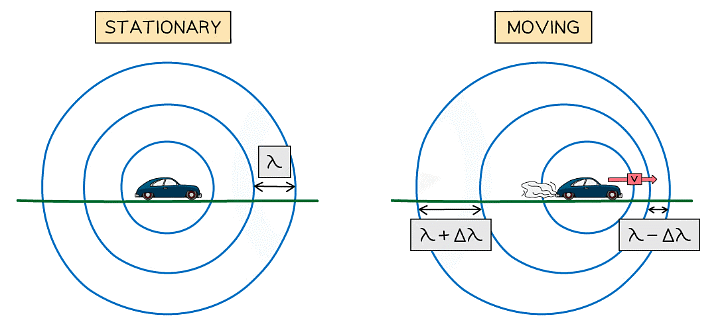 Diagram showing the wavefronts produced from a stationary object and a moving object
Diagram showing the wavefronts produced from a stationary object and a moving object
- A moving object will cause the wavelength, λ, (and frequency) of the waves to change:
- The wavelength of the waves in front of the source decreases (λ – Δλ) and the frequency increases
- The wavelength behind the source increases (λ + Δλ) and the frequency decreases
- This effect is known as the Doppler effect
- The Doppler effect also affects light
- If an object moves towards an observer the wavelength of light decreases
- This is known as blueshift as the light moves towards the blue end of the spectrum
- If an object moves away from an observer the wavelength of light increases
- This is known as redshift as the light moves towards the red end of the spectrum
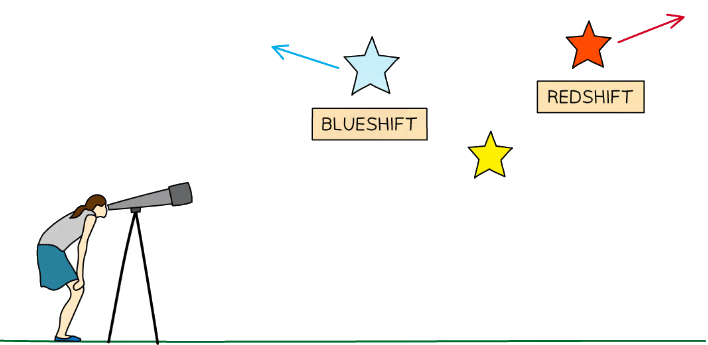 Light from a star that is moving towards an observer will be blueshifted and light from a star moving away from an observer will be redshifted
Light from a star that is moving towards an observer will be blueshifted and light from a star moving away from an observer will be redshifted
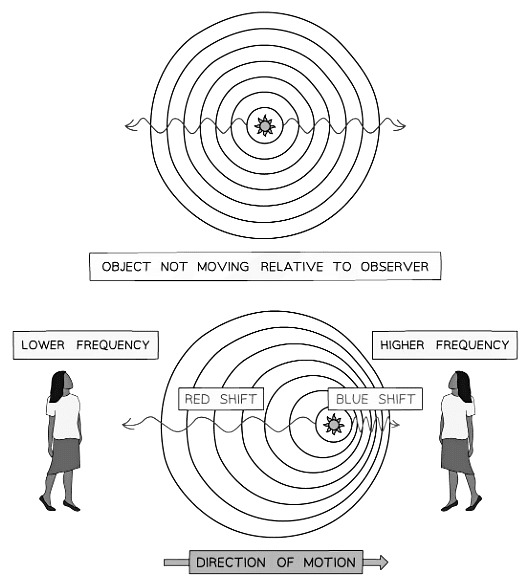 The observer in front observes a blue shift, the observer behind observes a red shift
The observer in front observes a blue shift, the observer behind observes a red shift
Exam Tip
You need to know that in the visible light spectrum red light has the longest wavelength and the smallest frequency.
To help you to remember what happens to the wavelength and the frequency of an object as it moves further away, it is useful to think about how the sound of a motorbike would change as it travels past and then away from you. As the motorbike moves away from you the pitch of the sound will become lower. This means the frequency of the sound is decreasing. If the frequency has decreased, the wavelength must also have increased.
The Expanding Universe
- The diagram below shows the light coming to us from a close object, such as the Sun, and the light coming to us from a distant galaxy
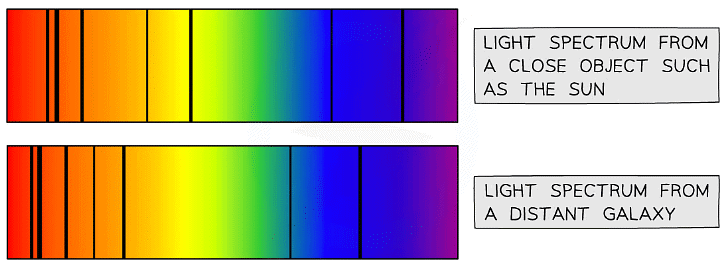 Comparing the light spectrum produced from the Sun and a distant galaxy
Comparing the light spectrum produced from the Sun and a distant galaxy - The diagram also shows that the light coming to us from distant galaxies is redshifted
- The lines on the spectrum are shifted towards the red end
- This indicates that the galaxies are moving away from us
- If the galaxies are moving away from us it means that the universe is expanding
- The observation of redshift from distant galaxies supports the Big Bang theory
- Another observation from looking at the light spectrums produced from distant galaxies is that the greater the distance to the galaxy, the greater the redshift
- This means that the further away a galaxy, the faster it is moving away from us
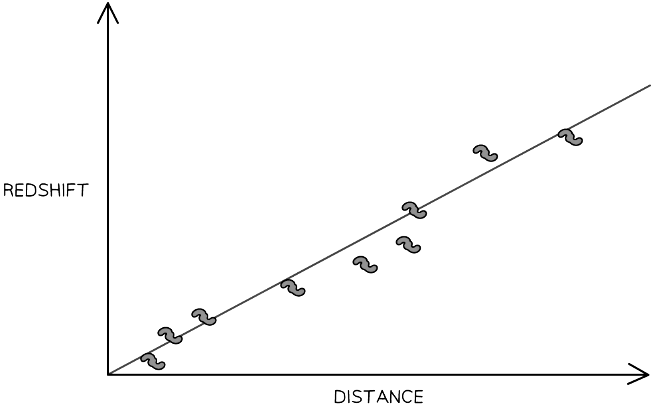 Graph showing the greater the distance to a galaxy, the greater the redshift
Graph showing the greater the distance to a galaxy, the greater the redshift
|
122 videos|150 docs|40 tests
|















